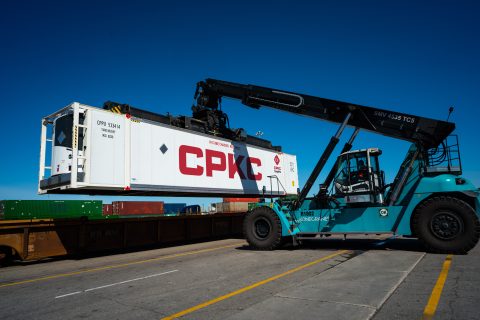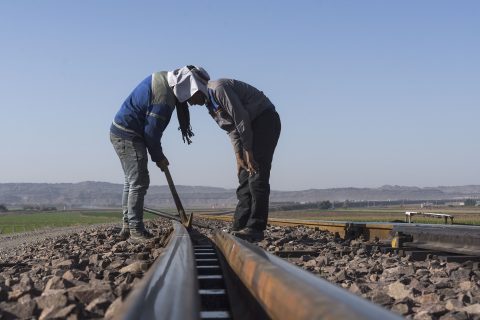TEN-T development should start with 6,000km section
FERRMED has presented the European Parliament a revised plan to develop the EU core network. Rather than optimising 80,000 kilometre of key railway lines by 2030, it has defined a network of 6,000 kilometre. According to the non-profit association, this network represents around 30 per cent of the EU’s basic network traffic.
It is the ambition of the European Commission to considerably improve interoperability in Europe by 2030. To this end it issued Regulation 913/2010, which resulted in defining the Rail Freight Corridors (RFC’s), collectively the Core Network of Europe. On the backbone of the European rail network, harmonisation should be accomplished on what is now 80,000 kilometre of railway. But this is impossible to realise, beliefs FERRMED.
Step by step
The investments necessary to achieve competitiveness in the core network are so great that FERRMED proposes investing only in projects that have high added value from a business, socioeconomic and environmental point of view. “The EU core network is too extensive”, the group proiclaims.
In total, some 6,000 kilometre have been identified, representing around 30 per cent of the EU’s basic network traffic. In a second phase, between 9,000 and 10,000 km will be added (bringing the total to approximately 15,000 kilometre), bearing almost 60 per cent of the traffic and environmental impact of the EU core network. Both phases must conclude by 2030, in order to fulfill the objectives of the White Paper on transport. This document defines the objectives regarding the EU core network.
After many years of analysis, FERRMED is fully convinced that investments concentrated in projects of high European added value and in corridors with the highest volumes of traffic is the only way to successfully advance the efficient development of the EU Core Network and achieve environmental objectives, the group added. This means developing the EU railway network step by step, starting with the busiest corridors, in accordance with the principles of the “circular economy”.
List of proposals
The business association has sent a list of proposals that members of Parliament should take into account in the next legislature to “improve the multimodal European logistics chain, through the promotion of an efficient system rail freight transport”.
For example, it states that there is a high level of inefficiency in the European multimodal transport system. “24 per cent of freight vehicles circulate empty and the remaining load is, on average, 57 per cent in terms of weight.” According to the group, the overall efficiency rate of rail freight transport on the core network is only 43 per cent. “The recoverable loss for the EU is estimated at 160 billion euros per year.”
FERRMED
FERRMED is a non-profit private multi-sector association based in Brussels. Its mission is to improve the European multimodal logistics chain by promoting an efficient rail freight transport system.
“The main advantage of FERRMED is that we are an multisectoral organisation, comprising of various types of parties from different industries. We may not design a solution, but we listen to the stakeholders who are dealing with the situation on the ground”, explained Valentí Ambrós, Advisor to the president.
You just read one of our premium articles free of charge
Want full access? Take advantage of our exclusive offer





